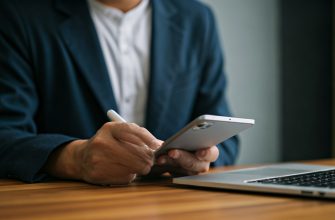Ever feel like budgeting apps make you feel worse, not better? You download one, set up your categories, track your coffee runs for a week… and then ghost it. Again. It’s not because you’re bad with money — it might be because your emotions aren’t being accounted for at all. If you’ve ever craved a way to interact with your finances that feels less like punishment and more like clarity, there’s a reason a 120-year-old Japanese method is gaining popularity again in the current year.
Kakeibo (pronounced “kah-keh-boh”) isn’t trying to optimize your digital dashboard. It invites you to write by hand, ask tough questions, and slow down. Think of it like financial journaling meets minimalism — a budgeting technique that balances your emotional reality with practical goals.
Forget tracking every cent with a calculator — this is about pausing to ask: “Was this purchase actually meaningful to me?” or “Why do I want to save?” Whether you’re coming off tech burnout, exhausted from hustle culture, or just want spending to feel more aligned with your values, kakeibo offers something rare: peace.
- What Is Kakeibo? The Budgeting Method That Centers Emotions, Not Apps
- The Origin Story: Over 100 Years Of Japanese Household Wisdom
- Why Kakeibo Still Works — Even In A the current year Economy
- How Kakeibo Is Structured — And Why It Feels So Different
- The four core questions that shape every month
- The four spending categories: needs, wants, culture, and unexpected
- Journaling, reflection, and accountability over time
- Mindfulness Over Math — The Emotional Framework
- Budgeting with self-compassion, not punishment
- Making room for joy purchases (and naming the joy)
- Reflecting on past purchases: “Was that aligned with what I actually wanted?”
- Treating your future self with respect through savings and boundaries
- Who Is Kakeibo For? Anyone Who’s Ever Felt Broken by Money
- People recovering from debt, financial trauma, and impulsive spending cycles
- Those who abandon digital systems after a few weeks
- Burnt-out millennials, sensitive perfectionists, chronic overthinkers
- People who want to enjoy money — without dissociating from it
What Is Kakeibo? The Budgeting Method That Centers Emotions, Not Apps
Kakeibo means “household ledger” in Japanese, but calling it just a ledger misses its heart. It’s a handwritten budgeting framework built around conscious decision-making and emotional check-ins. Created for everyday people — not accountants — it quietly encourages you to reflect instead of react.
Here’s how it works at its base:
- Every month, you write down your income and fixed expenses
- You decide how much you want to save — not what the spreadsheet says, but what feels doable
- Then, you list all your spending throughout the month in four categories: essentials, non-essentials, cultural, and unexpected
- You close the month by asking: “Where did I go over? What felt worth it? How can I improve?”
Now compare that to budgeting apps. They track, auto-categorize, and chart your behavior — but rarely ask why you bought something or how you felt after. Most are designed for efficiency, which can leave emotional clarity in the dust.
Kakeibo isn’t about maximizing margins or beating “bad habits.” It’s about learning what money truly means to you. It asks you to slow down and listen — not to the algorithm, but to yourself.
This difference is why kakeibo has found new fans in the “slow finance” movement. Much like slow food or slow fashion, it rejects the pressure to rush, automate, or force behavior change. People want a method that makes them feel human again — not shameful, anxious, or confused.
The Origin Story: Over 100 Years Of Japanese Household Wisdom
In 1904, Japan’s first female journalist, Hani Motoko, wasn’t just reporting — she was reshaping how women interacted with money. While male-dominated systems handled public finances, household budgeting was often left to women without formal support or tools. Motoko created kakeibo as a simple, repeatable practice that empowered housewives to make thoughtful, educated financial decisions at home.
Originally published in a women’s magazine, kakeibo laid out step-by-step instructions on how to reflect, spend, and save with intention — not guilt. Over time, it became a cultural mainstay across Japan, passed from mothers to daughters, partners to partners, notebooks to notebooks.
Kakeibo is deeply aligned with minimalist living, which prizes usefulness over excess. Japanese families using kakeibo weren’t chasing status or sparkle. They were asking things like:
- “Can I live well with less?”
- “Does this purchase support the life I want?”
- “How do I align my money with my values?”
This wasn’t just bookkeeping — it was a philosophy. And it stuck. Even today in Japan’s smartphone-heavy society, many people still use handwritten kakeibo ledgers with lined paper, seasonal illustrations, and space for journaling.
What’s wild is how modern this century-old method feels now. It’s not outdated. It’s timeless. Because at its core, kakeibo isn’t about controlling every yen or dollar — it’s about living more fully with the ones you do have.
Why Kakeibo Still Works — Even In A the current year Economy
Budgeting burnout is real. Especially when you’ve cycled through app after app that makes you feel like a failure. You miss your savings target? Shame. You overspend on joy? Regret. It’s like outsourcing your self-worth to a graph.
Kakeibo changes that narrative.
A huge reason people are trying analog methods like this again is pure tech fatigue. Modern budgeting tools flood you with notifications, data points, and reminders — but they rarely lead to lasting change. Kakeibo says: write it down, feel it out, reflect honestly.
It’s especially useful for anyone healing a money wound. People rejecting hustle culture, climbing out of debt, still reeling from financial trauma or compulsive spending — kakeibo gives structure without judgment.
Here’s why it resonates in today’s climate:
| What’s Not Working | What Kakeibo Offers |
|---|---|
| App overload and financial fatigue | Simple, tactile notebook practice |
| Shame-based tracking systems | Gentle reflection over punishment |
| No room for joy spending | Cultural and meaningful categories |
| Efficiency over emotion | Human-centered awareness |
Certain people find kakeibo especially healing:
- Creatives who find digital tools sterile
- Neurodivergent folks who need visual, tactile systems
- People recovering from compulsive spending
- Anyone rebuilding trust with money after years of avoidance
It’s not about being “good” with money in the traditional sense. It’s about understanding your rhythm, your needs, and your desires. Kakeibo is a method for getting real — not perfect.
As more people search for clarity and peace in their financial lives, it makes sense they’d turn to something that’s been helping folks do just that for over 100 years — with nothing more than a notebook and some honest reflection.
How Kakeibo Is Structured — And Why It Feels So Different
If you’ve ever snapped at your bank app or ghosted your spreadsheet halfway through the month, you’re not alone. Most budgeting tools feel like they were designed for robots—Kakeibo isn’t one of them. The Japanese method of Kakeibo (pronounced “kah-keh-bo”) brings your feelings, behaviors, and goals into the budgeting process in ways that actually feel human.
The four core questions that shape every month
Kakeibo doesn’t start with a lecture on compound interest or a color-coded pie chart. It starts with reflection—asking four simple, powerful questions each month:
- What’s your income and fixed expenses this month?
Before anything else, figure out what’s already spoken for—your rent, bills, subscriptions, transportation. This anchors your reality instead of building budgets on wishful thinking. - How much would you like to save?
This is your intentional goal, not whatever’s left at the end. Even if it’s just $50, it’s a declaration: your future matters. - How much can you spend?
Once fixed expenses and savings are out, the rest is your flexible money. This keeps your choices grounded in actual numbers—not vibes. - How will you improve based on what you learned?
Just like journaling after a breakup, this step helps you stop repeating what didn’t serve you last time. Be real, not ruthless.
The four spending categories: needs, wants, culture, and unexpected
Western budgets often punish anything non-essential. Kakeibo does the opposite. It splits your spending into four expressive categories:
- Essentials: groceries, utilities, rent, medicine.
- Wants: delivery, clothes, snacks, upgrades.
- Culture: books, movies, concerts, crafting—things that feed your brain or spirit.
- Unexpected: car repairs, last-minute gifts, dog vomit vet bills.
This structure removes shame. It admits you’re a human—not a wallet—and gives you freedom to plan for joy, growth, and chaos.
Journaling, reflection, and accountability over time
This isn’t a “set it and forget it” model. Kakeibo is designed to be an ongoing conversation—with yourself. Every week, you total your expenses. Every month, you compare how things felt vs. how they added up.
Some people write money reflections like diary entries: “I didn’t need that $17 coffee run, but it perked me up after a rough day.” Others use emotion trackers—color-coded pens or mood logs—to scan for impulse patterns.
Over time, it builds self-trust—and for many, that’s a bigger win than hitting a savings goal one time. You get to watch yourself grow, without spreadsheets barking at you.
Mindfulness Over Math — The Emotional Framework
Bills, debt, spending shame—it’s all heavy. And if you’ve ever sobbed while logging expenses, Kakeibo understands. This isn’t budgeting from a place of fear. It’s budgeting from curiosity, care, and sometimes grief.
Budgeting with self-compassion, not punishment
A lot of people try to “punish” their way into financial control—cutting out everything fun until they burn out. Kakeibo shows another path. It says, “you’re not broken—you’re learning.”
The practice encourages curiosity over criticism. Past purchases aren’t proof of failure; they’re data. Whether it’s daily coffee or a shopping binge, the goal is to understand why, not to shame yourself.
Making room for joy purchases (and naming the joy)
Kakeibo doesn’t treat joy as optional. In fact, it labels cultural expenses as their own category because people need beauty, art, connection. It’s not a moral failing to buy concert tickets—it’s part of being alive.
Some users even jot down why something brought joy: “That museum ticket reconnected me to myself” or “Buying this poetry zine made me feel seen in a hard week.” That little note makes the purchase matter more—and makes random scroll-spending stand out more sharply.
Reflecting on past purchases: “Was that aligned with what I actually wanted?”
Kakeibo teaches reflection like it’s muscle memory. A week after payday, that $90 impulse haul may not look like a win. When you revisit it, the question isn’t “Was it smart?”—it’s “Was that aligned with what I needed or hoped for?”
This opens the door to better awareness: “When I’m lonely, I spend on food delivery.” Or “When I’m proud of myself, I gift-shop online.” That’s not failure—it’s understanding.
Treating your future self with respect through savings and boundaries
This method treats savings not as sacrifice, but care. Squirreling away $150 for your future move, new laptop, or emergency fund isn’t just financial wisdom—it’s a love letter to your next chapter.
Boundaries aren’t about restriction anymore. They become protection. You’re not saying no to brunch because you’re broke—you’re saying no because you want your future to have options.
Who Is Kakeibo For? Anyone Who’s Ever Felt Broken by Money
This method wasn’t made for finance bros or people who wake up excited to check their net worth. It was made for the rest of us—the folks tired of guilt-ridden spending and budgeting apps that feel like nagging parents.
People recovering from debt, financial trauma, and impulsive spending cycles
If you’re clawing your way out of a spending spiral or carrying shame from debt, kakeibo gives you a gentle structure to rebuild trust. Not just with money—but with yourself.
Those who abandon digital systems after a few weeks
Apps glitch. Spreadsheets get ignored. Kakeibo thrives in the analog world—pen, paper, and presence. It’s tactile and visual, which makes it stickier for many brains.
Burnt-out millennials, sensitive perfectionists, chronic overthinkers
If budgeting makes you spiral, if money triggers panic, or if you’ve quit every system by February—this is your lane. Kakeibo trusts that self-awareness beats strict plans any day.
People who want to enjoy money — without dissociating from it
If your spending style swings from “YOLO” to “financial cleanse,” Kakeibo balances knowing joy with naming limits. It teaches you not to avoid your bank account—but to approach it with honesty and care.
This isn’t just a budget. It’s a mirror—and a bridge—and a blueprint. For anybody who ever said, “I just want to feel okay with money again,” Kakeibo says: start here.








